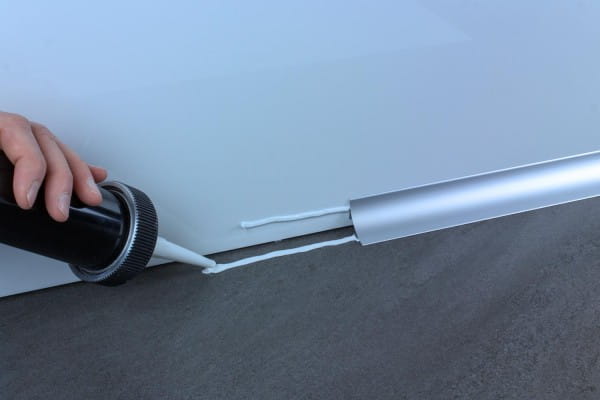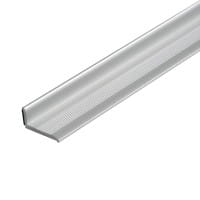Retrofitting tile profiles - is it possible?
Tile rails, e.g. made of aluminum, stainless steel or PVC, not only protect the sensitive edges against chipping and impact, but also set visual highlights and significantly enhance the room design. Tile profiles are placed under the tiles either with mortar or with a special tile adhesive (DURAL Speed-Flex installation adhesive). Normally, the profiles should always be laid at the same time as the edge tiles are set. But there are also exceptions where you can or must use them afterwards.
When can I lay tile profiles subsequently?
You want to renovate your house or apartment and start, for example, in the bathroom. A complete bathroom renovation is pending. The first look goes to the tiles on the wall and floor and it turns out that some tiles are still perfectly fine and so you do not necessarily have to replace the entire tiles. Due to human foot traffic and stress, the edges of the tiled surface are often affected by wear and chipping. Then it is possible to replace the already laid tile profiles with new rails. But beware, this is far from easy and not recommended, as it usually causes the tiles to break. For this reason, we have other profiles in our online store, with which subsequent installation is definitely feasible without damaging the tiles.
Replace old tile rails with new
If the house or apartment is already a bit older, the tile covering also lies for some time. For this reason, the area in which the tile rails were inserted is usually very solid and you should first carefully remove the old tile rails. Special care should be taken here, as the tile edges should not be damaged in any case. The tile rails are extremely tight due to tile adhesive or mortar, so you should remove this first. This can be done, for example, with a screwdriver or with a narrow grinding attachment with the grinder. Drive very carefully into the individual recesses and joints and free them from the mortar and adhesive. Gradually, the tile rail should now come loose and you can lay your new profile.
Again, we would like to emphasize that we do not recommend this procedure. It requires some skill and despite working cleanly, damage to the tiles can occur afterwards.
Laying tile rails subsequently in the tiled area
 End profile self-adhesive
End profile self-adhesiveA recommendable product, if you want to install tile rails afterwards, are our self-adhesive profiles.
Our end profile VARIO made of aluminum offers a neat finish to your flooring by retrofitting the self-adhesive tile rail. The profile is equipped with a self-adhesive back, which can be easily attached to the strips and thus perfectly conceals the tile edge and creates an optimal finish.
Install tile profiles later as wall and edge protection
Ramped corners and edges? No problem, we help with our corner protection angle made of aluminum and stainless steel. This profile is not only easy to install, no it is also super suitable for retrofitting and helps to hide optical defects and prevent against new damage. Often the corner protection angle is used in high traffic areas such as corridors or entrance areas in hospitals or catering establishments.
We offer you the corner protection angle in a wide range. Whether triple or single edged, different surfaces and heights - with us you will certainly find what you are looking for.
Transition profiles as an alternative?!
 Transition profile
Transition profileTo create a subsequent edge protection of the tiles, transition profiles are also considered a good alternative. Transition profiles are used when different floor coverings (laminate, tiles, parquet or carpet) are to be connected with each other. Likewise, most transition profiles compensate for small differences in height between different coverings.
Subsequent placement is not a problem with the transition profile, because the rails are usually not pushed under the tile edges. In this case, the rail is above the edges and is screwed or glued there to the adjacent flooring.
Whether you should choose the self-adhesive or screwed variant, that decides in which area you want to use the tile profile. Glued profiles are quick and easy to install, but not quite as durable as screwed ones. That's why we recommend a screwed transition profile in high-traffic areas.
Retrofitting tile rails - useful?
We fundamentally recommend retrofitting with transition profiles, corner protection angles and floor end profiles that are designed to be retrofitted. Whether screwable or self-adhesive. Whether a replacement of already installed rails, which were pushed under the tile edge, is economical, one should consider well due to the high workload. Great skill is required in removal and subsequent installation to achieve a visually satisfactory result.
Notes:
In general, the generally accepted rules of technology must be observed!
The following applies to all products/materials: The usability with regard to mechanical and chemical loads must be carefully checked in each individual case before installation. Protect material from prolonged exposure to sunlight.
If you still have questions, we will be happy to help!
We wish you success
the team from Alles zum Fliesen


